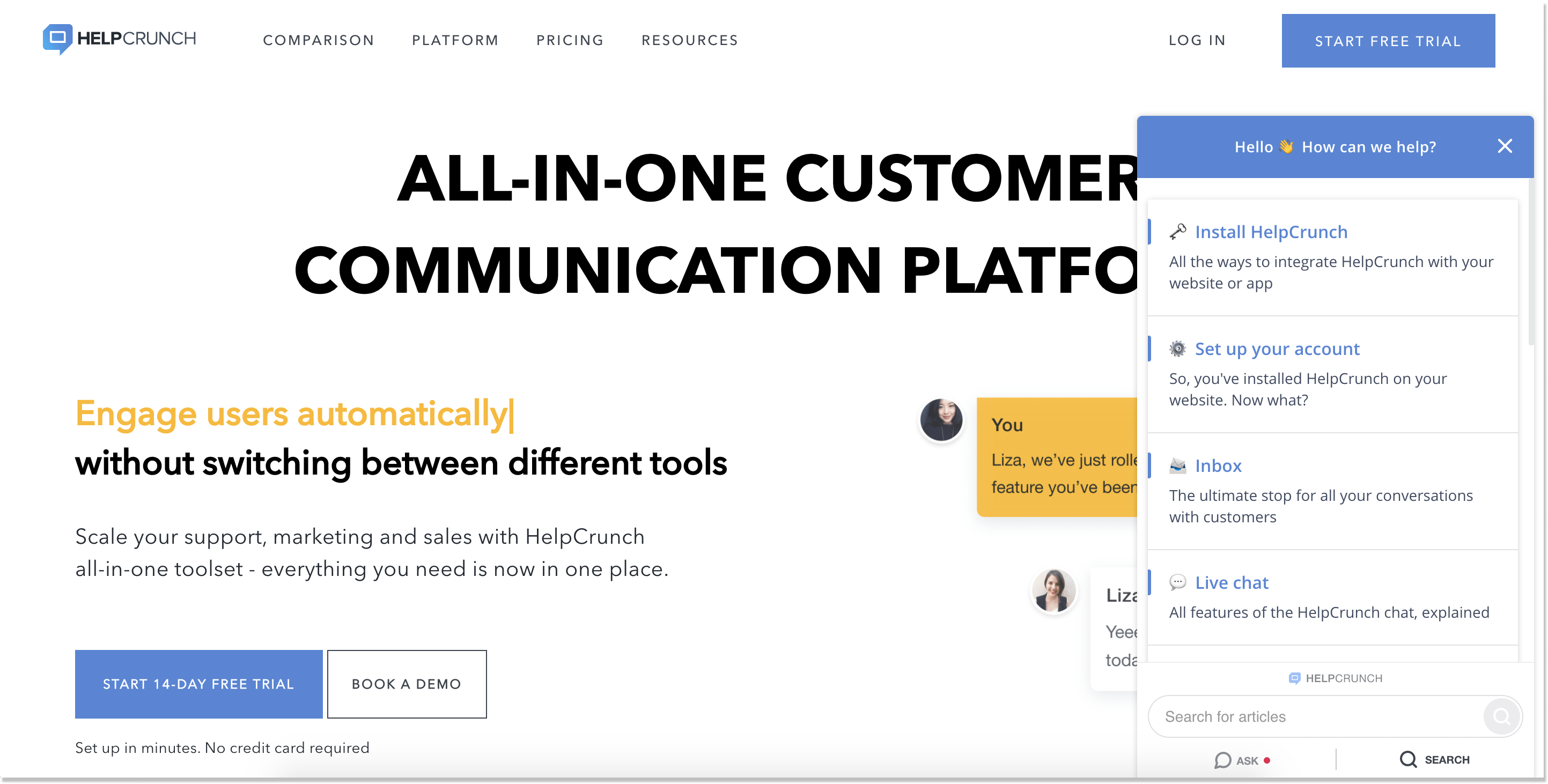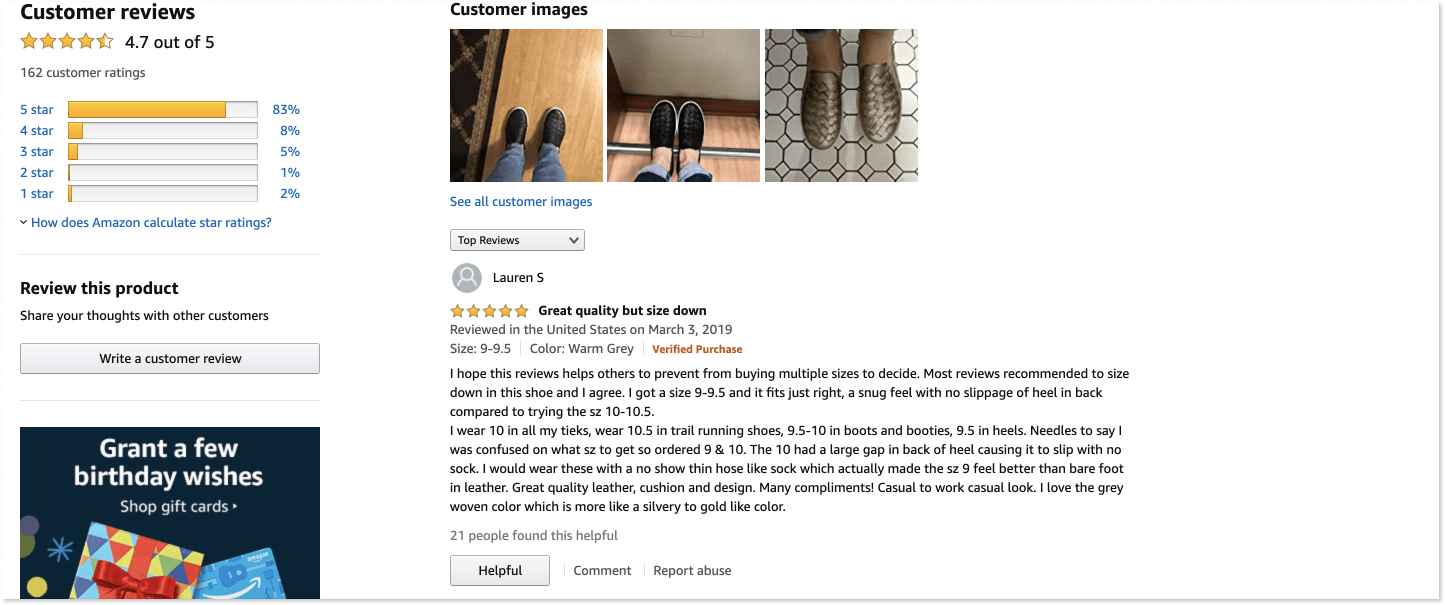How to Create a Powerful Customer First Strategy: An 8-Step Guide
To shape a stellar customer first strategy, you need a powerful team, advanced software, and what else? We've prepared a useful guide on that point you're going to enjoy.
Written by Olesia Melnichenko

Our world has changed so that customers are in charge of businesses now. They decide whether to shop online or offline. Clients instinctively dictate how brands should shape their sales funnel, take marketing efforts, and build customer experience.
‘Customer is king’ and ‘Customer comes first’ are better-known mottos. Even though people are in the driving seat nowadays, state-of-the-art products or the greatest talents are massive tricks up a company’s sleeve. But if you don’t put customers first, nothing makes sense.
Thriving companies usually strike a balance between catering to clients’ needs and meeting business goals. They build marketing strategies to attract customers that work for both their employees and clients. Today we’re going to break down what those strategies mean and how you can implement one in your business.
What is a customer first strategy?
A customer-centric strategy is an approach at which a company anticipates its clients’ demands and promotes a stellar customer experience at each touchpoint. It helps nurture the culture of loyal customers and ultimately increase profits.
Such a plan implies creating services that would go above and beyond customer expectations. Simply put, it means boosting a brand’s value in the customers’ eyes. Being customer-oriented helps build win-win relationships between a client and a company.
In your endeavors to carve out a perfect customer first strategy, it’s easy to forget about either your staff or clients. At the end of the day, customers and service agents are interrelated in this context. If support reps feel undervalued, it’s harder for them to prioritize customers. The same goes for clients: if they aren’t satisfied, employees don’t feel like experts.
8 Steps to Create a Full-Fledged Customer First Strategy
So, how to exceed customer expectations with personalized customer service? A customer first strategy requires ample effort. What does it take to put customers first in the long run? Let’s unscramble this matter below.
1. Cultivate all-hands support
There are some companies around the globe that build their internal cultures just around monitoring customer satisfaction. Only support agents should be responsible for what the users think. Is it right? Wrong.
A customer first strategy won’t work if it falls solely into client-facing employees’ hands. Your business is about to benefit if you grow a customer service mindset inside marketing, sales, or IT teams.
A world-famous fast food restaurant McDonald’s is a vivid example of a company promoting all-hands support. Its employees switch duties to reach the highest productivity and understand clients better. For instance, a chief manager can be a cashier to load off the coworkers in busy hours and not let customers leave. Yes, everyone is OK about being at the counter once in a while.
By having different teams assisting clients at some point, there’s a chance to listen to what a customer thinks and wants. Human Resources should ensure all employees are pleased (everything from proper office facilities to extra day-offs will do): happy staff often leads to even happier customers. And product teams, in their turn, have to gather client feature requests and make sure every detail is implemented.
For instance, teams of such large software companies as Basecamp, Slack, or Zapier are also committed to an all-hands approach. Every employee spends a couple of hours a week to process customer support tickets. This isn’t only beneficial for customers, but it’s also useful for team collaboration. By the way, we at HelpCrunch are practicing this method, too.
2. Shape your buyer persona
Seriously, you can’t build a customer-centric plan without knowing who your customer persona is. Having a birds-eye-view on who you are working for allows you to create essential policies and guidelines to improve your business. Think of the money and effort you can save this way.
Take time to understand your customers. Start with the following tips:
- Create a general idea. Decide who your clientele is: who are those people? What industry are they engaged in? Are there startups that need an advanced toolkit? You should carry out research focusing on such areas as demographics, education, daily life, product preferences, etc. Depending on this information, you can map out a specific plan on how you want to meet your clients’ needs.
- Track customer metrics. You may identify yourself as a customer service oriented business owner only if you’re well-versed in certain metrics. These are everything from demographics and purchasing behavior to churn rate and brand awareness.
Once you study your customer persona, there’s no need in beating around the bush and performing a meaningless job. Just set your mind to what your typical clients want to hit it.
3. Be proactive
Customer-oriented companies usually go for proactive customer service. They waste no time and reach out to their users first before some challenges even occur. This is in contrast with reactive customer support when a client gets in touch with a support agent.
By being both proactive and customer-oriented, you’re about to get absolute perks:
- Improved retention rates
- Boosted brand reputation
- Freed up team
Assisting customers proactively can’t be imagined without an effective communication platform. Speaking of which, such an all-in-one solution as HelpCrunch is the best if you want to go omnichannel and integrate automated customer support into your routine.
All essential customer communication tools are under the same roof: live chat, chatbot, help desk, auto messages, knowledge base, and email marketing. You can interact with clients using advanced features, omit tickets that pile up, and show your engagement.
With live chat, there’s an opportunity to boost sales, improve customer happiness, and free up a support team. Besides, an integrated, structured knowledge base can help you promote customer self-service and save both clients and service agents lots of time (you can send an article to a related customer question right from a chat and customers can find the solution without even asking a support agent!).

4. Define customer wishes
Speaking of your clients’ needs, do you know all of them? If not, you should gather qualitative feedback and then process it.
For starters, choose a powerful customer communication tool and think about your service’s speed and efficiency. Some of the best practices to collect reviews and opinions are:
- Voice of Customer surveys (VoC): VoC surveys help gather valuable data from popups and emails. Include closed- and open-ended questions to achieve maximum results.
- Host an event: Thanks to the digitalized era, it’s possible to arrange meetings, workshops, demos, and webinars no matter the location. Utilize such video conferencing apps as Skype, Zoom, or GoToMeeting to engage with customers in real time. Let people ask questions about your product or service and express their opinion about your solutions.
- Take advantage of social networks: One of the greatest things about social networks is that people feel free to speak their heart out. This is a perfect chance for you as a business owner to observe your customer comments and learn a lot about their attitudes. Check up on your brand’s Twitter or Facebook notifications once in a while to see if there is a line left from a client. If you react to it timely, positive results are around the corner.
5. Promote transparency
People usually want their questions answered right away. The more they wait, the more they become angry and irritated. Sadly enough, it’s not always possible to address each customer complaint due to some reasons. Believe it or not, a ‘customer comes first’ policy can sometimes be detrimental.
When you can’t deliver clients what they ask for, consider giving them a clear reason why it’s that. To put it simply, handle the situation with transparency. Customers like being heard, so let them know what obstacles you have right now and when their request will be filed down.
As scary as the whole idea of transparency may seem, it’ll be a perfect element for your customer first strategy. The recent survey has shown clients’ thoughts about transparent brands. Such an attitude doesn’t only enhance loyalty but also generates more trust.
By the way, Amazon’s transparency is absolutely amazing. This e-commerce leader earns money when it helps people make buying decisions. For instance, reviews are placed directly on product pages, which demonstrates the reseller’s credibility. No more guesswork: people share their real feedback for other customers.

6. Adopt the 5 Whys technique
The 5 Whys method stems from Toyota Motor Corporation and has already found its devotees across various industries. The core of this technique is getting to the root of any problem and preventing it by asking the 5 Whys. Anyway, let me provide an example.
Problem: We failed to send the newsletter for the latest updates on time.
- Why didn’t we send the newsletter on time? — The updates skipped the deadline.
- Why were the updates not rolled out on time? — Because the team was dealing with different tasks for too long.
- Why was the team still working on other features? — One of the newcomers didn’t know all the details.
- Why was the new employee unfamiliar with all the procedures? — Due to the lack of proper training.
- Why wasn’t the new employee trained properly? — Because the team lead thinks that newcomers should learn while working.
A customer first strategy will be hard to shape without asking these questions. Moreover, a team should do that together as it promotes ideas sharing and continuous improvement. Once you analyze each of the Whys, you can tweak your customer service processes only when needed.
7. Pitch ideas to improve customer experience
People think if you produce a popular product or service, it’s time to relax a bit. Well, it doesn’t work that way. You can’t just sit back and watch sales rise on their own. For starters, it’s important to use your best endeavors to enjoy the greatest results.
Plus, customers will feel your noninvolvement and might get angry. Your competitors won’t lose their chance: they will come up with innovative ideas to woo your clients away.
Innovation is the recipe for a powerful customer-centric strategy. It shows you realize the clients’ needs and are ready to cater to them no matter what. Not to be taken aback, look for some fresh ideas to improve customer experience: it’ll indicate your devotion to service quality and products.
Turn modern technology to your advantage and use such out-of-the-box tools as VR chatbots, programmatic advertising, (Virtual Reality), AI (Artificial Intelligence), or IoT (Internet of Things).
8. Celebrate success
Building a customer first strategy can be really challenging for your customer support team. It means that service agents need to be at the top of their game regularly, so you can find new ways to impress your clients.
88% of employees say that giving credit for good work is important. So, as a business owner or a team lead, you should incentivize great performance and celebrate success. It’s essential to discuss mutual goals and make reaching the company’s milestones a team sport. You also can pat your employees on the back for achieving customer service KPIs. Such a concept will pique interest in a customer first strategy and bring about perfect business outcomes.
Final Thoughts
A customer-oriented philosophy isn’t only a good thing to practice, but it’s essential to retaining clients. Now, people trust businesses that appreciate them and center around their needs.
A united team, transparency, innovative ideas, and understanding of customer demands can be game-changing. Take advantage of the steps we’ve covered here and top them up with the new ones over time.
To make your customer service exceptional, go for the leading software like HelpCrunch. Sign up now to start shaping your customer first strategy like a pro.





